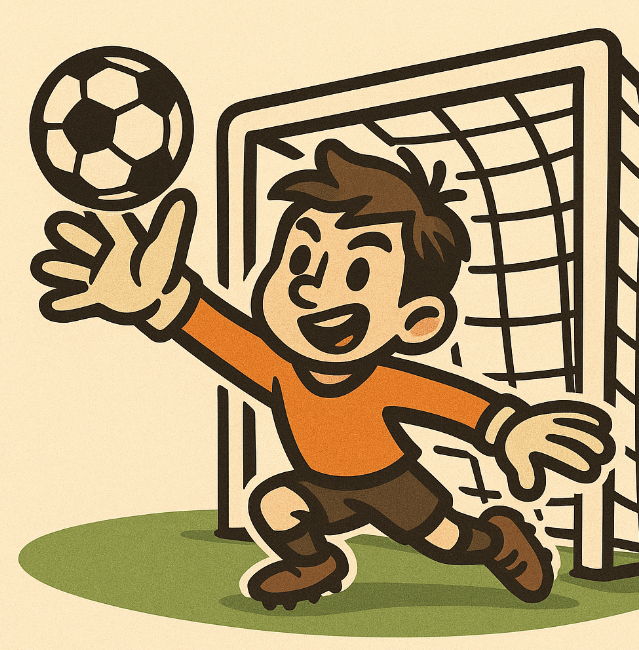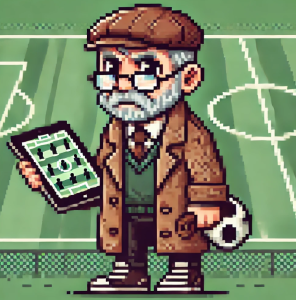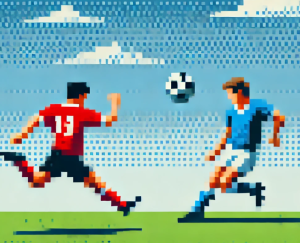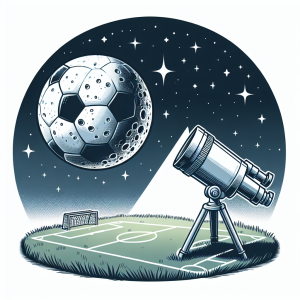
What Makes Elite Keepers Different
Every weekend, thousands of fans cheer when a goalkeeper makes an impossible save—diving full stretch to tip a shot over the bar. But behind those highlight-reel moments lies a truth few realize: goalkeeping is one of soccer’s least understood positions, scientifically speaking.
A 2022 review by Markel Pérez-Arroniz and colleagues at the University of the Basque Country pulled together 56 studies to create the most complete picture yet of what makes an elite goalkeeper. Their findings show how body type, athletic performance, and training shape success—and where most youth training still goes wrong.
If you’re a coach, player, or parent of a young keeper, this research could change how you think about practice.
The Goalkeeper’s Body: Built for Command
The data confirms what we see at the top level: taller and heavier keepers dominate. Elite professionals average 180–190 cm (5’11″–6’3″) and 81–89 kg (178–196 lb). Size matters because reach and presence can decide tight matches—but that’s not the whole story.
Among youth players, the review found worrying trends. Between ages 9–13, goalkeepers often lag behind field players in strength, speed, and technique. Early specialization—spending most of practice “between the posts”—means they miss out on developing full athletic coordination. In other words, too many young keepers are trained as statues, not athletes.
Takeaway: Before 14, goalkeepers should train like outfield players for agility, balance, and technical skill. Time under the bar should be balanced with free movement and multi-sport play.
What Really Drives Performance
Forget long-distance endurance runs. The study found that aerobic capacity at long distances doesn’t predict goalkeeper performance. Instead, short, explosive movements—sprints, jumps, agility, and quick mobility—separate top goalkeepers from the rest.
Elite keepers hit 5 m in about 1.45 seconds, perform squat and countermovement jumps up to 46 cm, and show exceptional hip flexibility that allows them to cover more space in one-on-one situations.
The best goalkeepers excel not because they can run farther, but because they can repeat short bursts of explosive effort with minimal fatigue.
Training Tip: Build sessions around repeated high-intensity actions: 5–10 m sprints, reactive dives, and lateral shuffles. Pair them with short recovery intervals to mirror match demands.
The Hidden Science of Strength
Goalkeepers generate some of the highest absolute leg strength on the team, especially in the quadriceps, hamstrings, and hip muscles. But there’s a catch: they also tend to have greater strength imbalances between legs—often more than 10%. That’s a red flag for injury risk.
Core and grip strength also grow with experience: senior keepers showed up to 50 kg grip strength and 180 kg of isometric leg force.
Training Tip: Include unilateral exercises like single-leg squats, resisted lateral bounds, and core stabilization. Track asymmetries and correct them early.
Technique: Not Just About Hands
Modern goalkeepers aren’t just shot-stoppers—they’re playmakers. Yet, studies found that young and amateur keepers consistently scored lower in dribbling, passing, and shooting than field players. Elite goalkeepers, by contrast, performed significantly better on these technical tests.
That’s not a coincidence. The top keepers—think Ederson, Alisson, or Courtois—train their “foot IQ” as much as their saves.
Training Tip: Integrate ball-handling drills every session. Try 4v2 rondos with keepers as field players, one-touch passing circuits, or shooting practice that ends in a controlled distribution play.
External Load: The Real Work Behind the Gloves
On match day, goalkeepers cover surprisingly little ground—4–6 km total, with only 1% of that distance at high intensity. But those high-intensity moments—dives, sprints, direction changes—are everything.
Studies show that top keepers average 13–23 defensive actions, 3–15 jumps, and up to 56 high-intensity efforts per game. Substitute goalkeepers actually face more load in training, performing more jumps and accelerations to stay sharp.
For teams without GPS tech, the review found that perceived exertion (RPE) correlates strongly with workload. Tracking RPE daily can help coaches prevent fatigue and adjust intensity, even without fancy equipment.
Training Tip: Use a 1–10 RPE scale after each session. Compare across the week to ensure match-day freshness and balance between starting and backup keepers.
Injury Insights: Protect the Knees, Shoulders, and Hips
Good news: goalkeepers are generally less likely to be injured than field players. But when injuries occur, they tend to involve the upper body (shoulders, wrists, elbows) or lower limb impact injuries from landings and collisions.
The most common issues?
- Shoulder sprains and dislocations from diving and collisions.
- Knee and ankle sprains from awkward landings.
- Hip bursitis and adductor strains from repeated side jumps.
A proper fall technique, along with strength in the trunk and hips, drastically reduces these risks.
Training Tip: Include technical fall practice in warmups. Strengthen shoulder stabilizers (rotator cuff work), hip abductors, and adductors weekly.
5 Key Takeaways for Coaches and Clubs
- Train explosiveness, not endurance. Focus on sprint, jump, and reactive agility drills.
- Balance athleticism with technique. Develop the feet as much as the hands.
- Build symmetry. Correct left-right imbalances early.
- Monitor load. Use RPE or GPS to prevent overtraining.
- Strengthen for prevention. Target shoulders, hips, and knees—especially in preseason.
Your Turn to Kick It Off
The modern goalkeeper is more athlete than acrobat. Science is showing us that building strength, balance, and game intelligence can turn a good keeper into a game-changer.
How does your club train goalkeepers? Are young keepers in your program getting enough movement variety? How might you adapt these findings to your training week?
Join the conversation—share your thoughts, drills, or success stories in the comments below.



